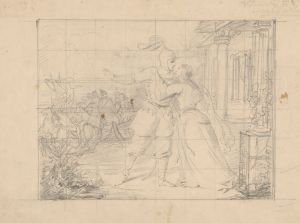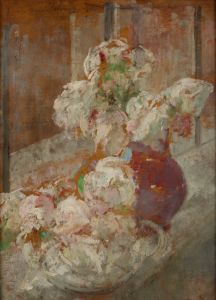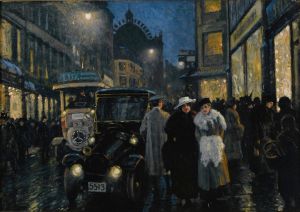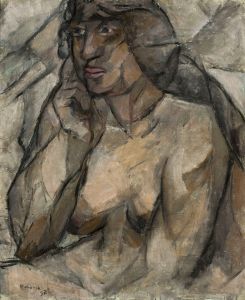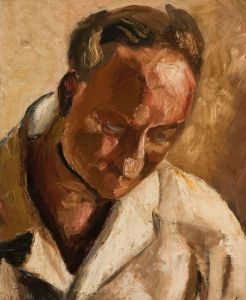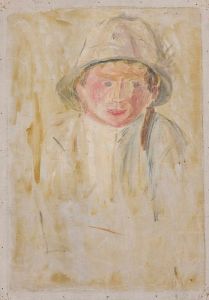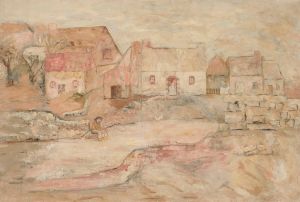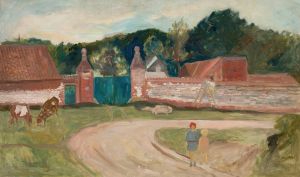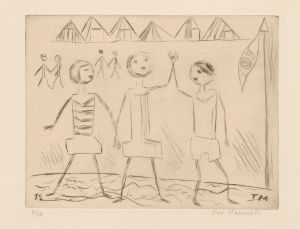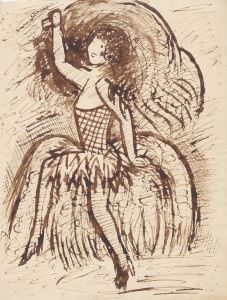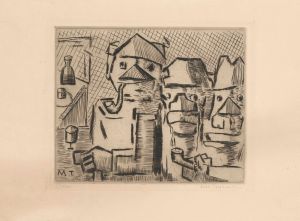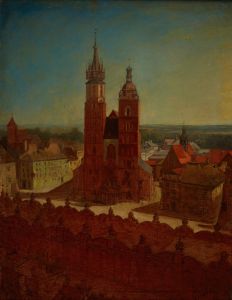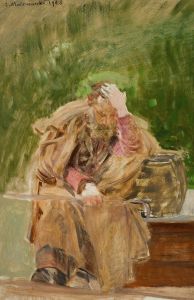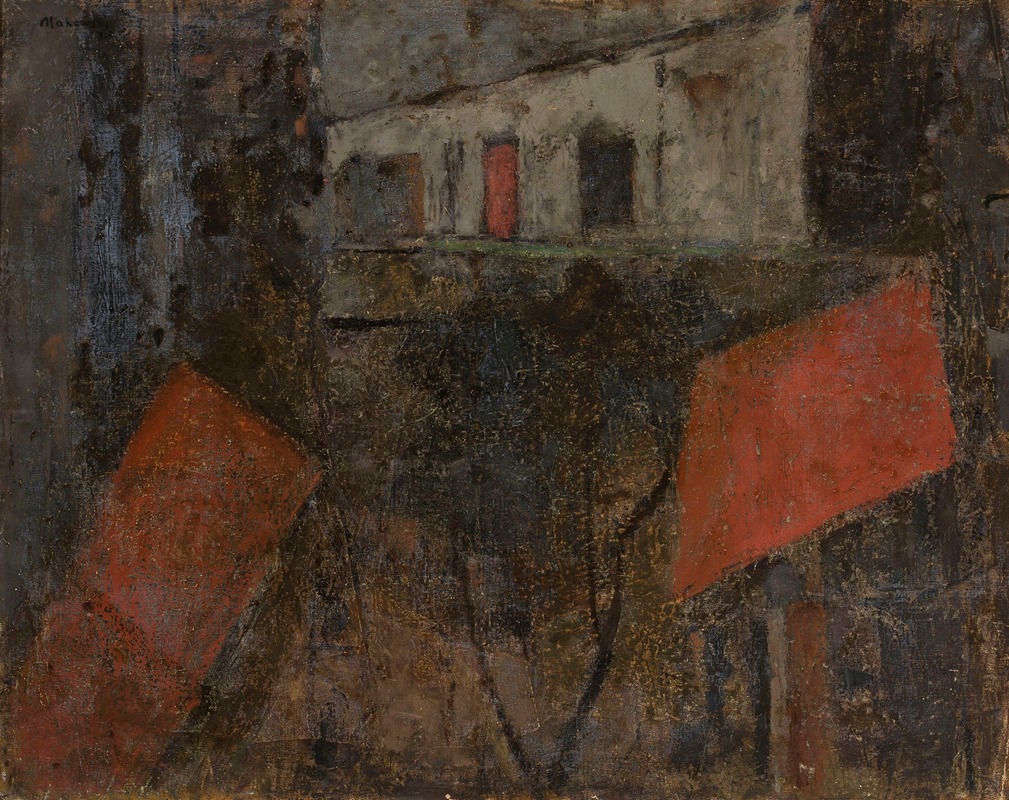
Ulica
A hand-painted replica of Tadeusz Makowski’s masterpiece Ulica, meticulously crafted by professional artists to capture the true essence of the original. Each piece is created with museum-quality canvas and rare mineral pigments, carefully painted by experienced artists with delicate brushstrokes and rich, layered colors to perfectly recreate the texture of the original artwork. Unlike machine-printed reproductions, this hand-painted version brings the painting to life, infused with the artist’s emotions and skill in every stroke. Whether for personal collection or home decoration, it instantly elevates the artistic atmosphere of any space.
Tadeusz Makowski (1882-1932) was a Polish painter known for his unique style that combined elements of folk art, Cubism, and symbolism. His works often depicted scenes of everyday life, characterized by a distinct use of color and form. One of his notable paintings is "Ulica" (The Street), which exemplifies his artistic approach and thematic interests.
"Ulica" was created during a period when Makowski was deeply influenced by his experiences in France, where he spent a significant part of his career. The painting captures a street scene, a common subject in Makowski's oeuvre, reflecting his fascination with urban life and the simplicity of rural existence. The artwork is notable for its vibrant colors and the geometric simplification of forms, which are hallmarks of Makowski's style.
In "Ulica," Makowski employs a palette of bright, contrasting colors to bring the scene to life. The composition is structured with a sense of rhythm and balance, guiding the viewer's eye through the various elements of the painting. The figures in the scene are stylized, with exaggerated features and simplified forms, reminiscent of folk art traditions. This approach not only highlights Makowski's technical skill but also his ability to infuse his work with a sense of whimsy and charm.
The painting reflects Makowski's interest in the everyday lives of ordinary people. The street is depicted as a lively, bustling place, with children playing and adults going about their daily routines. This focus on the mundane aspects of life is a recurring theme in Makowski's work, underscoring his belief in the beauty and significance of the commonplace.
Makowski's time in France exposed him to various artistic movements, including Cubism, which influenced his approach to form and composition. In "Ulica," this influence is evident in the way he breaks down the scene into geometric shapes and planes, creating a sense of depth and perspective that is both dynamic and engaging. However, unlike the more abstract tendencies of Cubism, Makowski's work retains a strong narrative quality, making his scenes accessible and relatable.
"Ulica" is also a testament to Makowski's skill as a colorist. The use of bold, contrasting hues not only adds visual interest but also conveys the mood and atmosphere of the scene. The interplay of light and shadow, along with the careful placement of colors, creates a sense of movement and vitality, drawing the viewer into the world Makowski has created.
Throughout his career, Tadeusz Makowski remained committed to exploring the human condition through his art. His works, including "Ulica," offer a window into the lives of ordinary people, rendered with a sensitivity and insight that transcends the specific time and place in which they were created. Today, Makowski is remembered as one of Poland's most important modernist painters, and his works continue to be celebrated for their originality and emotional depth.
"Ulica" stands as a representative example of Makowski's artistic vision, combining elements of folk art, modernist techniques, and a deep empathy for his subjects. It is a painting that invites viewers to appreciate the beauty of everyday life, seen through the eyes of an artist who found inspiration in the world around him.





